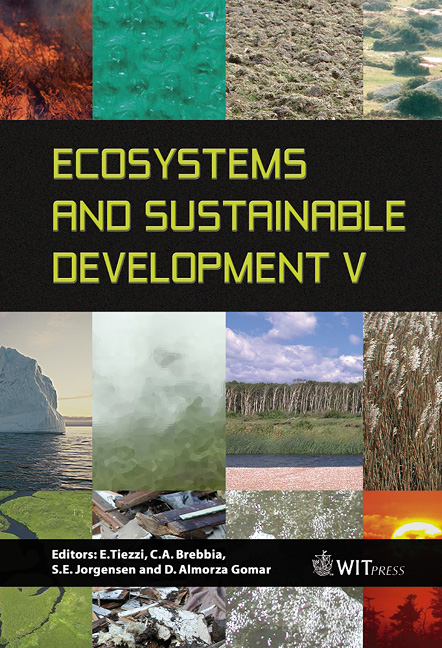A Model Based Estimation Of The Effect Of Population Concentration In The Urban Areas In Eastern Asia In Terms Of Nitrogen Pollution
Price
Free (open access)
Transaction
Volume
81
Pages
9
Published
2005
Size
523 kb
Paper DOI
10.2495/ECO050131
Copyright
WIT Press
Author(s)
J. Shindo, K. Okamoto & H. Kawashima
Abstract
We analyzed the current nitrogen cycle and compared it with previous data (from 1961 and 1980), in Eastern Asia including 10 countries in Southeast Asia, and three countries in East Asia, to clarify the environmental effect of the population concentration. Nitrogen loads from agricultural fields, livestock wastes, human wastes and NOx deposition of each country were estimated with a nitrogen cycle model based on the statistics on food production and consumption, NOx emission etc. They were assigned to 1km by 1km grid cells according to the landuse distribution and population distribution. Total nitrogen load was 56 x 10 6 t (3.8 t N/km 2 ) in 2000; 64% is from the agricultural sector including crop production, livestock waste and volatilized ammonium, and 13% is from human wastes. The extremely high nitrogen loads were localized to the restricted grid cells corresponding to large cities. We regarded the grid cells whose population was larger than 1000 as highly populated grids. We called them ‘HPGs’. HPGs occupied only 1.31% of the whole study area, where 25% of people were living, and currently received 7.8% of the nitrogen loads (44% of which were from human wastes). The average nitrogen load in HPGs was 22 t N/km 2 and the maximum value was 230 t N/km 2 . Compared with the results for 1961, total nitrogen load increased 3.8 times in the whole area and 6.2 times in HPGs. The highest nitrogen load and induced nitrogen pollution arose from urbanization. Further migration of people to urban areas is expected in Eastern Asia where 60% of people are still engaged in agriculture. Keywords: nitrogen cycle, Eastern Asia, food production, population increase, urbanization.
Keywords
nitrogen cycle, Eastern Asia, food production, population increase, urbanization.





